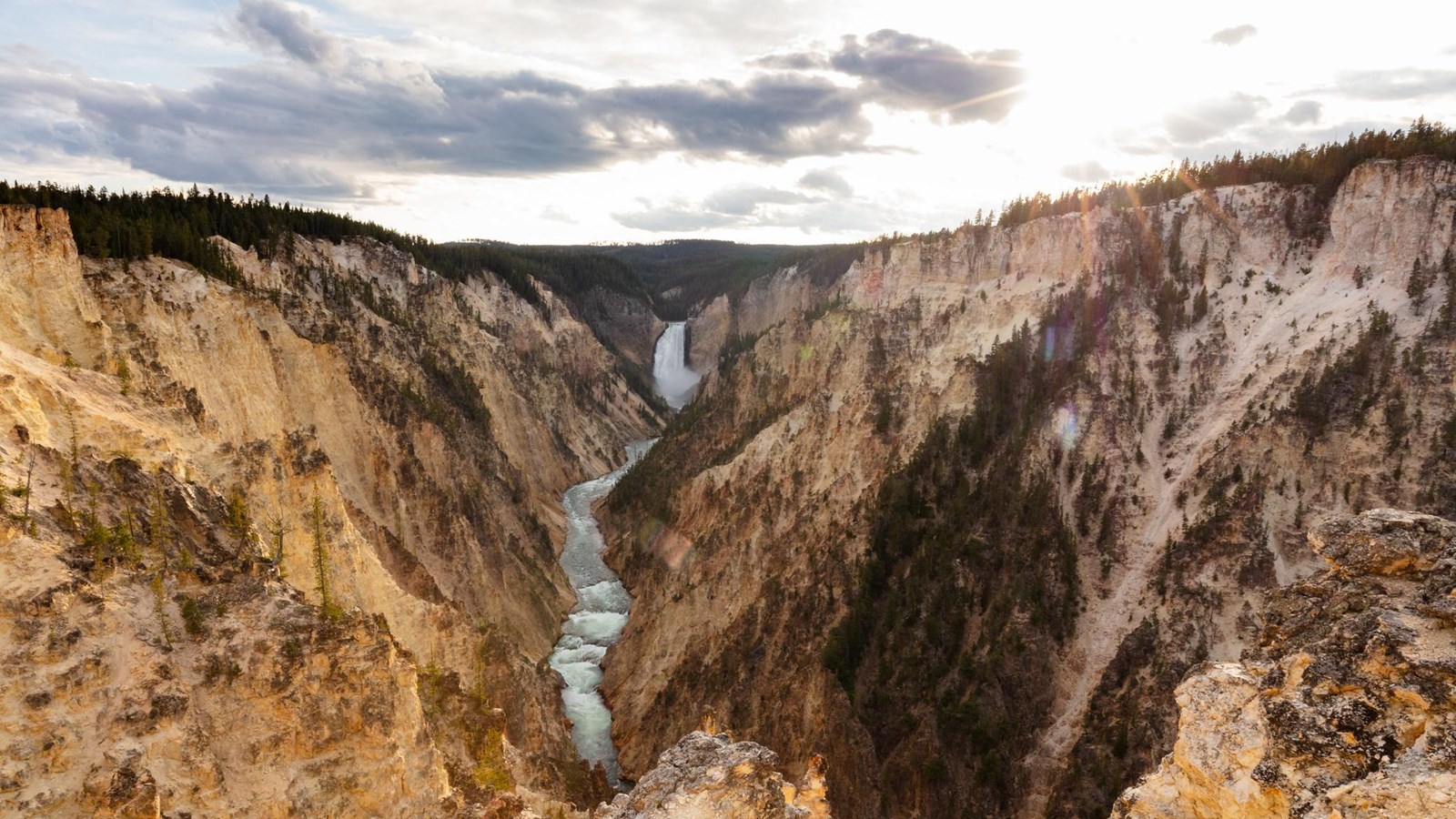Last updated: November 26, 2024
Place
Grand Canyon of the Yellowstone - Artist Point

NPS / Jacob W. Frank
Historical/Interpretive Information/Exhibits
Upper Falls: 109 ft.; Lower Falls: 308 ft. The canyon bends between the Upper and Lower Falls, so there is no location where they can be seen at the same time.
The canyon is roughly 20 miles long, more than 1,000 feet deep, and 1,500 to 4,000 feet wide.
"There is a majestic harmony in the whole, which I have never seen before in nature's grandest works. The fall itself takes its leaps between the jaws of rocks whose vertical heighte above it is more than six hundred feet, and more than nine hundred feet above the chasm into which it falls. . . ."
--Nathaniel P. Langford, 1870
Early writing and art about Yellowstone aroused the interest of the world and resulted in its designation as a the world’s first national park. Thomas Moran’s sketches and paintings of the Yellowstone region, including the Grand Canyon, captured the imagination of the public and Congress.
In 1872, Congress paid Thomas Moran $10,000 for an oil painting of Grand Canyon of the Yellowstone but allocated $0 for the new park’s budget that year.
Geology
Scientists continue to develop theories about the formation of the Grand Canyon of the Yellowstone. After the Yellowstone Caldera eruption, 640,000 years ago, lava flows and volcanic tuffs buried the canyon area; but hydrothermal gases and hot water weakened the rock. The river eroded this rock, carving a canyon in the Yellowstone River beginning at Tower Fall and heading upstream to Lower Falls.
Canyon Views
Trails and walkways wind along the rims and into the canyon. A trail guide with map and information is available.
- Stay on boardwalks or trails.
- Wear comfortable shoes, carry water, and take your time.
- Watch your footing.
- Do not throw anything into the canyon.
- Do not pick flowers or collect rocks.
- Never approach or feed wildlife.
